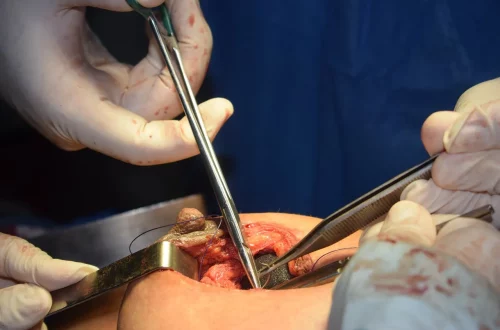
Understanding Innies Vaginas: Myths, Facts, and Insights
Understanding the complexities of human anatomy is essential for fostering a deeper appreciation of our bodies. Among the myriad of discussions surrounding female anatomy, the topic of innies vaginas often surfaces, eliciting both curiosity and confusion. An “innie” refers to the appearance of the vulva where the labia minora are tucked inward, creating a unique and distinct look. This anatomical variation is just one of many that exist and highlights the diversity of female bodies.
The conversation surrounding innies often includes a mix of myths, facts, and societal expectations. Misunderstandings and stereotypes can lead to a sense of inadequacy among those who may feel their bodies do not conform to a perceived standard. It’s important to embrace the natural diversity present among individuals, recognizing that every body is unique. This understanding can help dismantle harmful myths and promote a more inclusive narrative about female anatomy.
In this exploration, we will delve into the various aspects of innies vaginas, aiming to dispel myths while providing accurate information. This conversation is not only relevant for individuals but also for educators, health professionals, and anyone interested in understanding the nuances of female anatomy. By addressing these topics with clarity and sensitivity, we can foster a more informed and accepting perspective on body diversity.
Myths Surrounding Innies Vaginas
When it comes to innies vaginas, there are numerous myths that circulate, often leading to confusion and misinformation. One common misconception is that the appearance of the vulva is indicative of a woman’s sexual experience or desirability. This idea is not only false but also harmful, as it perpetuates unrealistic standards and pressures on individuals regarding their bodies.
Another prevalent myth is the assumption that innies are less common than other types of vulvas. In reality, there is no definitive statistic that categorically states which vulva shape is the “norm.” The diversity in vulvar appearance is vast, and each type—whether innie, outie, or somewhere in between—has its own beauty. This diversity is a natural part of human anatomy and should be celebrated rather than stigmatized.
Some individuals may also believe that having an innie means they are less capable of enjoying sexual experiences or that it could lead to complications. However, the reality is that sexual pleasure is not determined by the external appearance of the vulva. Factors such as emotional connection, communication, and individual preferences play a far more significant role in sexual satisfaction.
Furthermore, there are myths surrounding hygiene and care for innies. Some people may think that innies require special cleaning methods or are more susceptible to infections. In truth, the body’s natural processes are generally sufficient for maintaining hygiene, and any concerns should be addressed with a healthcare professional rather than through speculation.
By debunking these myths, we can help individuals feel more confident and comfortable in their bodies. Education is a powerful tool for fostering understanding and acceptance, paving the way for healthier conversations about female anatomy.
The Anatomy of Innies Vaginas
Understanding the anatomy of innies vaginas involves recognizing the various components of the vulva and how they interact. The vulva is the external part of the female genitalia, encompassing the labia majora, labia minora, clitoris, urethra, and vaginal opening. In individuals with innies, the labia minora are positioned inward, which can create a more tucked appearance.
The labia majora are the outer lips of the vulva, typically fleshy and covered with pubic hair. They serve as protection for the internal structures and can vary significantly in size, shape, and color from person to person. The labia minora, or inner lips, can also exhibit a wide range of appearances. For innies, these inner lips appear to be drawn in, giving the vulva its characteristic shape.
The clitoris, a highly sensitive organ, sits atop the vulva and plays a crucial role in sexual pleasure. It is often surrounded by a fold of skin called the clitoral hood, which can also vary in appearance among individuals. The urethra, located just below the clitoris, is the opening through which urine exits the body, while the vaginal opening is the entrance to the vagina and is located further down.
Each person’s anatomy is unique, and this diversity contributes to the broad spectrum of experiences individuals may have regarding their bodies. It is essential to recognize that variations in anatomy are completely normal and should be viewed with appreciation rather than judgment.
Understanding the anatomy of innies vaginas can also empower individuals to engage in better self-care. Knowledge about one’s body can lead to more informed decisions regarding sexual health, hygiene practices, and comfort levels during intimate experiences. By fostering an open dialogue about anatomy, we can promote a healthier relationship with our bodies.
Social Perceptions and Body Image
The societal perceptions surrounding innies vaginas can significantly impact individuals’ body image and self-esteem. Media portrayal often emphasizes certain beauty standards, leading many to feel inadequate if their bodies do not match these ideals. For instance, the representation of female anatomy in pornography tends to favor specific aesthetics, which can create unrealistic expectations for individuals regarding their own bodies.
These perceptions can lead to a range of emotional responses. Some may experience body dissatisfaction, while others may feel pressure to conform to societal standards. This can affect not only how individuals view themselves but also their relationships with partners and their overall sexual well-being.
It’s crucial to challenge these societal norms and foster an environment where all body types are celebrated. Emphasizing the diversity of vulvar appearances can help normalize variations and reduce stigma. Educational initiatives that provide accurate information about anatomy and promote body positivity can empower individuals to embrace their unique characteristics.
Moreover, open discussions about body image among peers can create a supportive community. Sharing personal experiences and challenges can foster empathy and understanding, allowing people to feel less isolated in their insecurities. Encouraging conversations about anatomy, including innies vaginas, can contribute to a more accepting culture that values diversity over conformity.
Ultimately, embracing body diversity and challenging societal perceptions can lead to healthier attitudes toward our bodies. By fostering a culture of acceptance and understanding, we can empower individuals to appreciate their own unique anatomies.
Health and Care Considerations
When discussing innies vaginas, it’s important to address health and care considerations that are relevant to all individuals with female anatomy. Understanding how to maintain vaginal health is crucial, regardless of the specific appearance of the vulva.
Hygiene is an essential aspect of care. Many believe that special cleaning methods are necessary for innies, but in reality, the vagina is self-cleaning. Routine washing with mild soap and water is sufficient for maintaining cleanliness. It is important to avoid douching or using harsh soaps, as these can disrupt the natural balance of bacteria and lead to infections.
Regular gynecological check-ups are vital for monitoring reproductive health. These appointments allow healthcare providers to address any concerns and provide essential screenings. Individuals should feel empowered to discuss any questions or issues regarding their anatomy, including the appearance of their vulva. Health professionals are there to provide guidance and support in a non-judgmental environment.
Sexual health education is another critical component of overall well-being. Understanding safe sex practices, consent, and communication can enhance sexual experiences and promote healthier relationships. Individuals should feel comfortable exploring their bodies and communicating their needs with partners.
Furthermore, any unusual changes in the vulva or vaginal area should prompt a visit to a healthcare provider. Symptoms such as irritation, unusual discharge, or discomfort should not be ignored, as they may indicate an underlying issue that requires attention.
By prioritizing health and education, individuals can foster a positive relationship with their bodies and make informed decisions about their sexual health.
—
**Disclaimer:** This article is for informational purposes only and does not constitute medical advice. For any health concerns or questions, please consult a qualified healthcare professional.




